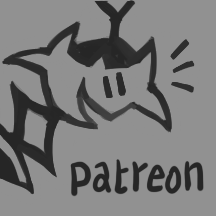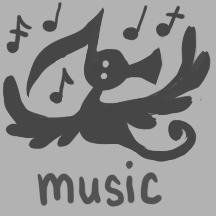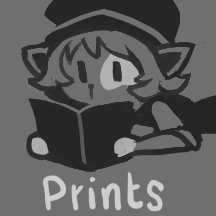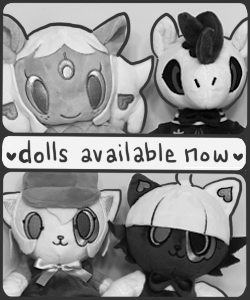Species Creation Mini-guide

Species creation
Making a species can be kind of daunting. There are so many questions to ask yourself as you make a new one… questions that will be important if anyone else is to make their own characters of the species! The most important thing to keep in mind is that you want your species to be broad enough so that anyone can make a character that does a unique take on the idea while still being recognized as a member of the species. This is, unfortunately, the hard part. But when achieved, it's also extremely rewarding.
Filling a niche / fitting a role
The single most important question to ask yourself is: what does this species do? what sets this species apart from existing species?
This is where the base idea comes from. Even though there's other stuff to be considered, like setting limits on powers and narrowing down the scope of an idea, it's always good to start broad. Very broad. Narrowing it down comes later.
Don't worry too much if you can't figure out what the species does, to start with. That's why there's also the question "what sets this species apart from others?" -- either question is a good starting point and springboard. If I can't figure out one half, I start developing the idea anyway because it usually fills itself in as I work.
If you have a very simple idea, as I often do to start with, you'll find it's rather plain on its own. This isn't a problem in and of itself, but it becomes one if you don't give people ways to play around with the idea. Even though this is a very old sheet by now, it serves as a good example for my following points: the foxbat
This, obviously, came about by combining both a fox and a bat. The plain, affinity-less foxbat is essentially what every single foxbat looked like before I thought "maybe they should look different." If the foxbat sheet had only had a foxbat that looked like that, but in different colors, it would have been a rather poor sheet. What made the idea better for others to play with was introducing the idea that they're a species of extreme differences depending on affinity. This starts to answer the question "what sets this species apart" -- because not every species is able to change so easily from generation to generation based on the magic of the environment, nor does every species show such variety based on affinity, either. Even though it's not a huge thing, it's enough to start to make it interesting. Just by figuring that out, the question "what does the species do?" becomes more answered. We know now that the species is able to be extremely varied, and that it can survive in many different climates and magical places -- and that its looks should reflect the environment to which it is best suited.
An extra level is added to the species by mentioning that spirit and spirit subtypes often result in higher intelligence, allowing a foxbat to live out a life in a civilized place as a non-pet individual, if it so wished -- which leaves room for many interesting questions to be asked. This is where character creation comes in. You want to make a sheet that lets people ask a lot of questions that they can then explore in story format. Some such questions for foxbats would include: "What if a civilized foxbat had a pet foxbat? Would that be weird? Would other civilized foxbats look down on that? Would the civilized foxbat have a hard time constantly being mistaken for a pet? Would it then hide its wings? What if this character had a child with another fox species? Would that kid be scorned from society?"
People need to have their imaginations sparked -- and you need to prod them in the right way. Our next point will demonstrate how to help do that.
Making a varied set of examples
You can have an amazing idea, but if you don't have some good examples drawn out and shown to the viewer, they might skip right over it. (Even if you can't draw, you should still come up with a few different base descriptions just to show variety. It helps develop the idea further, regardless.)
Let's compare two sheets I've done, an old one and a remake.
While the first sheet is "okay" and still has room to make some semi-different characters, the bodies are all too similar and the idea is way too narrow. The question "what sets this species apart" wasn't answered in a way that allowed for huge variety. The first pass on it was kind of a "shark weasel otter" thing, which meant you were really only going to be seeing… more shark weasel otter things. And there's not a whole lot you can do for mixing that up when the description doesn't talk a lot about why they exist or how variety can be introduced. There's no neat extra layer like there was with the foxbats and the spirit-subtype clause. There's not really much of anything to spark questions of "what if I did this? what if a vanguard were put in this situation?" - which makes it fall flat.
I sought to rectify this in the new version, trying to fix the problems I had with the old one. The biggest problem that I, myself, had… was that I didn't want to make a vanguard character. This should never be the case. I should always be able to make several different characters of a new species and instantly come up with ideas for all of them. If I ever don't want to and can't find inspiration for a character of a sheet I've just made, then it's probably not worth showing yet.
The new version did fix these things. I had come up with the idea that there would be different kinds of vanguards, as a sort of fix to getting around coming up with a vanguard character… I wanted to use the species, but I didn't want to make a character that would, inevitably, look like all of the ones on the first sheet. So I was thinking, "what if the other vanguards looked like other aquatic life?" - which became the basis of the revised idea.
Vanguards' question could finally be answered: "what sets this species apart from others? well, it changes to mimic the marine life around it." This was finally an interesting idea. This meant I could take the idea of the vanguard and apply it to any current or future water species, or even take inspiration from any aquatic life that exists IRL, but that despite having many choices, I could still fit it into the narrowed down idea of what a vanguard is like.
Essentially, it's important to have a lot of choices, but a direction to take your choice is absolutely necessary. Species sheets should provide both.
No cookie-cutters or clones
A good rule of thumb is to turn all of your sketches into a silhouette to see if they stand out from each other enough. It can be hard to tell what "enough" is, but someone should be able to pick them apart at a glance. Back to the foxbat sheet, originally all of my foxbats were the same, when the species was first conceived. They all had the same body shape. The only difference was that I switched out colors and added spots or something sometimes. That's not good for or conducive to making different designs. Anyone making a foxbat would have stuck to something very similar - and then what? It would just have been kind of a copy, or a clone, of something that already existed. Varying the body only goes so far -- but letting people know that they can completely change the limbs to match the affinity? That helps a lot.
If you give varied examples that are all different via silhouette and shape and not just by color or swapping a couple of body parts, you'll do a lot of good for anyone who wants to create a character of that species. Showing variety by way of number of limbs, placement of special parts, materials the species can be made of, etc, can do wonders for opening up the potential. You want someone else's character to make you think, "This is that species! But this isn't like anything that already exists!" - but that's very hard to do if you don't give enough examples. People want to be able to see what "rules" they can "break" before they set about trying to make their own takes on things. Otherwise, they tend to stick with what they see, and that's it.
Introducing broad ideas that can be narrowed down
Manticores will be my first example. I wanted to take the idea of the lion-bodied, scorpion-tailed creature of myth and legend and shove it into a Flora role. Sometimes they have bat wings, too, which is something I easily could have worked into an example -- and did not. But anyway, I broke the idea down into something more than just "cat body and scorpion tail" - it became "cat and scorpion/buggish parts", which allowed for a lot more mix-and-matching than before. There are some cool directions to take the idea of "cat body and scorpion tail" -- but there are a lot MORE directions to take "cat and bug parts mixed together, with stingers being mandatory" - what if you want to have antennae and whiskers combined? What if you mess with the number of eyes? What if you give them chitinous armor? What if you look at different kinds of cats and scorpions to pick out things that go nicely together? There's just a lot more that can be done when the idea is broken down further in a way so as to allow for greater mix-and-match potential.
Even though the idea behind them is solid, manticores are a species I'll eventually want to remake examples for -- examples that show what specific bugs you can combine manticores with. Updating species sheets as you work on them and get better examples is always good! Even if the base idea was good, if you can come up with even more that allows people to see just how broad the idea was, then that's better.
A more recent example would be the sea dragons. These guys are obviously based on both dragons and viking ships, design-wise. Breaking it down, then, you're left with the idea of "ship pieces". For most sea dragons, they just end up looking like the figurehead on ships. The influence is kind of obvious there. But… when you introduce mixes, you can see how other elements of a ship start to tie in. For instance, when combining the cockatrice with the sea dragon, you end up with wings that look like a ship's sail, thus using more of the idea of "ship motif" - and other mixes end up using rope in the design as well, like the sea dragon and gorgon mix. The many eye stalks end up becoming lengths of rope with a gem affixed on the end, which ties into the gem idea behind sea dragons.
Having an overall theme like with the sea dragons can help people have a vision with where to take their character, and it can make them feel clever for coming up with new ways of combining the theme with their character idea. This should be in your goal list when creating new species! You want someone to feel interested at the idea of applying the theme you've provided to their budding ideas.
Ending notes
While I definitely can't show you exactly how to make a new species, I hope this has been a little more informative in regards to how we go about it, at least. I ask myself a lot of questions and try hard to figure out ways to both limit and broaden ideas. If you keep asking yourself questions, and if you successfully make up 6-7 different characters with vastly different looks and differing backgrounds per species… then you're probably on the right track. Good luck and happy creating!
And as a bonus, here's a super fantastic character generator by Feufochmar of the Flora IRC chat. As of this posting, it's been updated with all current species sheets and locations and should be fun to mess around with if you want to make some characters before trying your hand at making a whole species!
—glitchedpuppet




![[Beleth looking bored]](https://floraverse.com/static/images/global-title-foreground-left.png)

![[Andre looking proud of his graffiti]](https://floraverse.com/static/images/global-title-foreground-right.png)







Comments